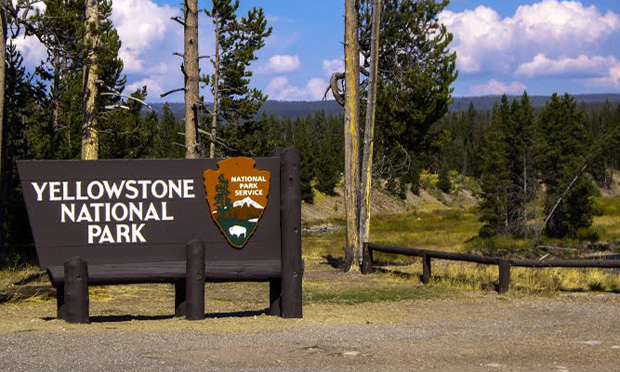One hundred years ago, the National Park Service (NPS) was founded to oversee the vast, federally owned public parks, wilderness and historic sites and spaces across the continent. The legislation that enabled the NPS’s creation, called the Organic Act of 1916, articulated the core mission: ” … to conserve the scenery and the natural and historic objects and the wild life therein and to provide for the enjoyment of the same in such manner and by such means as will leave them unimpaired for the enjoyment of future generations.”
The NPS now manages 410 parks, as well as sites on the National Register of Historic Places and those designated as National Heritage Areas, National Wild and Scenic Rivers, National Historic Landmarks and National Trails. In 2015, there were some 307 million visits to the national parks. The annual budget to run the NPS was $2.6 billion in 2014. However, there was a reported backlog of deferred maintenance costs of about $11.9 billion as of February 2016, and revenue shortfalls reportedly are driving the park system to partner more with private companies to fund repairs.
While the twin goals of conservation and recreation are not necessarily mutually exclusive, many of the current conflicts that make the news relating to the national parks revolve around tensions between public usage of the land and the push to leave resources “unimpaired.” From wildfire management practices and fishing and hunting rules to management of bears, wolves and all manner of animals, numerous controversies and difficult policy decisions are a fact of life for the National Park Service and local stakeholders and visitors across many parks.
Despite the many local conflicts, the system’s ailing infrastructure and the budget battles, the national parks remain a treasured resource for millions. A 2016 study, “Total Economic Valuation of the National Park Service Lands and Programs: Results of a Survey of the American Public,” provides the first overall assessment of these public resources and assets and the activities facilitated by them. The authors, Michelle Haefele and John Loomis of Colorado State University and Linda J. Bilmes of the Harvard Kennedy School, note that, while there have been many studies that attempted to quantify the value of particular parks or resources within them, no study has sought to derive an overall national figure.
The study uses a variety of data sources to calculate figures, including public opinion surveys that ask citizens to value these resources. The sample size was about 700 people, 59 percent of whom reported visiting a national park in the past two years. In terms of methodology, both direct and passive value was calculated. The researchers note: “Direct use values derive from on-site use, whereas passive use values are independent of on-site use. In each case we use survey data to calculate ‘net economic values’ — how much people would pay over and above what they currently spend in order to enjoy National Parks and NPS programs. For non-visitors, these net economic values reflect the entire benefit.”
This study, which was peer-reviewed and will be submitted for publication in academic journals, was funded by the National Park Foundation, the S.D. Bechtel Jr. Foundation, the Turner Foundation, Cody J. Smith of the Summit Foundation and UPD Consulting Inc.
Its findings include:
- The overall figure, which the researchers note is “conservative,” is $92 billion. They note that “two-thirds of this total ($62 billion) is for National Park lands, waters and historic sites; the remaining $30 billion is attributed to NPS Programs.”
- When citizens were asked if “it is important to me that National Parks are preserved for current and future generations whether I visit them or not,” 94.9 percent of respondents agreed.
- Only 14.7 percent of respondents indicated that they do not benefit from national parks, and 6.2 percent thought the U.S. should sell off some national parks.
- A substantial portion of those surveyed indicated they would be willing to consider paying higher taxes to continue preserving the parks.
“Our findings should be of interest,” the researchers conclude, “both to researchers and policymakers when considering the appropriate level of budgetary resources needed to maintaining [sic] this significant national asset.”
Related research: The National Parks Service also produces a tally and model of visitor spending effects in order to quantify how the parks affect local economies.
Keywords: Yellowstone, Great Smoky Mountains, Rocky Mountain, Grand Canyon, Yosemite, Grand Teton, Golden Gate, U.S. Department of the Interior, preservation, tourism, recreation, wildlife, summer vacation, family vacation


Expert Commentary